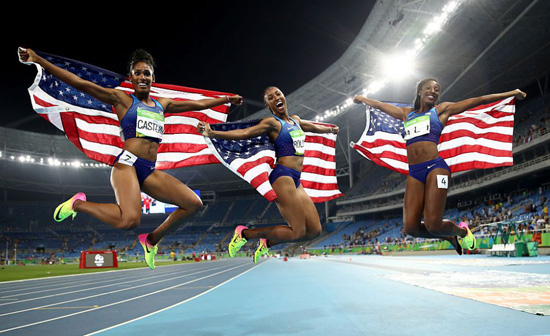The Rise of Women's Sports: A Look at the Changing Landscape"

- Krystal Johns
- 07 Mar, 2023
Women’s sports have come a long way over the last few decades. Women athletes have achieved unprecedented success, shattered stereotypes, and pushed the boundaries of what is possible in their respective sports. The rise of women's sports is a reflection of the changing landscape of gender roles and societal attitudes towards women. In this blog, we will take a look at the factors that have contributed to the rise of women's sports, the challenges that women athletes still face, and the potential for further growth and development.
Historical Context
The history of women's sports is one of struggle and perseverance. Women athletes faced significant barriers to entry, including discrimination, limited opportunities, and lack of funding. The first modern Olympic Games in 1896 did not include any women's events, and it wasn't until the 1900 Games in Paris that women were allowed to compete. Even then, women's events were limited to tennis, sailing, croquet, equestrian, and golf. It wasn't until the 1928 Games in Amsterdam that women's track and field events were added.
In the United States, the passage of Title IX in 1972 was a major milestone for women's sports. Title IX prohibited discrimination on the basis of sex in any education program or activity that received federal funding. This included athletic programs, which meant that colleges and universities were required to provide equal opportunities for men and women athletes. Since the passage of Title IX, the number of women participating in sports has increased significantly.
Factors Contributing to the Rise of Women's Sports
Increased Visibility
One of the most significant factors contributing to the rise of women's sports is increased visibility. Thanks to advancements in technology, women's sports are more accessible than ever before. Fans can watch live games and events on television, online, or through social media. This has led to increased interest in women's sports, as fans have had the opportunity to see the incredible athleticism and skill of women athletes.
Increased Opportunities
Another key factor in the rise of women's sports is increased opportunities. As a result of Title IX and other policies, women athletes have access to more opportunities to compete and excel. This has led to a growing number of women participating in sports at all levels, from youth leagues to professional sports.
Changing Attitudes
Societal attitudes towards women have also played a significant role in the rise of women's sports. As more women have entered the workforce and taken on leadership roles in various fields, gender stereotypes have begun to break down. Women are no longer seen as fragile or incapable of physical activity. Instead, they are recognized for their strength, agility, and resilience.
Challenges Facing Women Athletes
Despite the progress that has been made, women athletes still face significant challenges. One of the biggest challenges is the gender pay gap. Women athletes, even at the highest levels, often earn significantly less than their male counterparts. For example, the United States Women's National Soccer Team has been fighting for equal pay for years, despite being more successful than the men's team.
Another challenge is the lack of media coverage for women's sports. Despite the increased visibility of women's sports, they still receive less coverage than men's sports. This can make it difficult for women athletes to gain recognition and build their fan base.
Finally, women athletes still face discrimination and harassment, both on and off the field. This can range from comments about their appearance to more serious incidents of sexual harassment or assault. These experiences can be traumatizing and can impact their ability to perform at their best.
The Future of Women's Sports
Despite the challenges that women athletes face, the future of women's sports looks bright. There are a number of initiatives underway to promote and support women's sports, including increased funding and media coverage. The Women's Sports Foundation is a non-profit organization that is dedicated to advancing the lives of women and girls through sports and physical activity. They provide grants and scholarships to female athletes, as well as advocacy and education on issues related to women's sports.
Another initiative that is gaining momentum is the creation of women's professional leagues. In recent years, we have seen the establishment of professional leagues in soccer, basketball, and hockey, among others. These leagues provide women athletes with the opportunity to pursue their sport at a high level and to earn a living doing what they love.
The Olympics also play a significant role in the growth and development of women's sports. The inclusion of new events and the expansion of existing events provide women athletes with more opportunities to compete and showcase their skills on a global stage. The 2020 Tokyo Olympics, for example, included several new events, such as women's surfing and skateboarding, which received significant media coverage and attention.
The rise of women's sports is a testament to the resilience and determination of women athletes. Despite significant barriers and challenges, they have pushed the boundaries of what is possible in their respective sports and have inspired a new generation of female athletes to pursue their dreams. While there is still work to be done to ensure equality and fairness in women's sports, the future looks bright. With increased visibility, opportunities, and changing attitudes, women's sports are poised to continue their upward trajectory and to become an integral part of the sports landscape.
Leave a Reply
Your email address will not be published. Required fields are marked *










